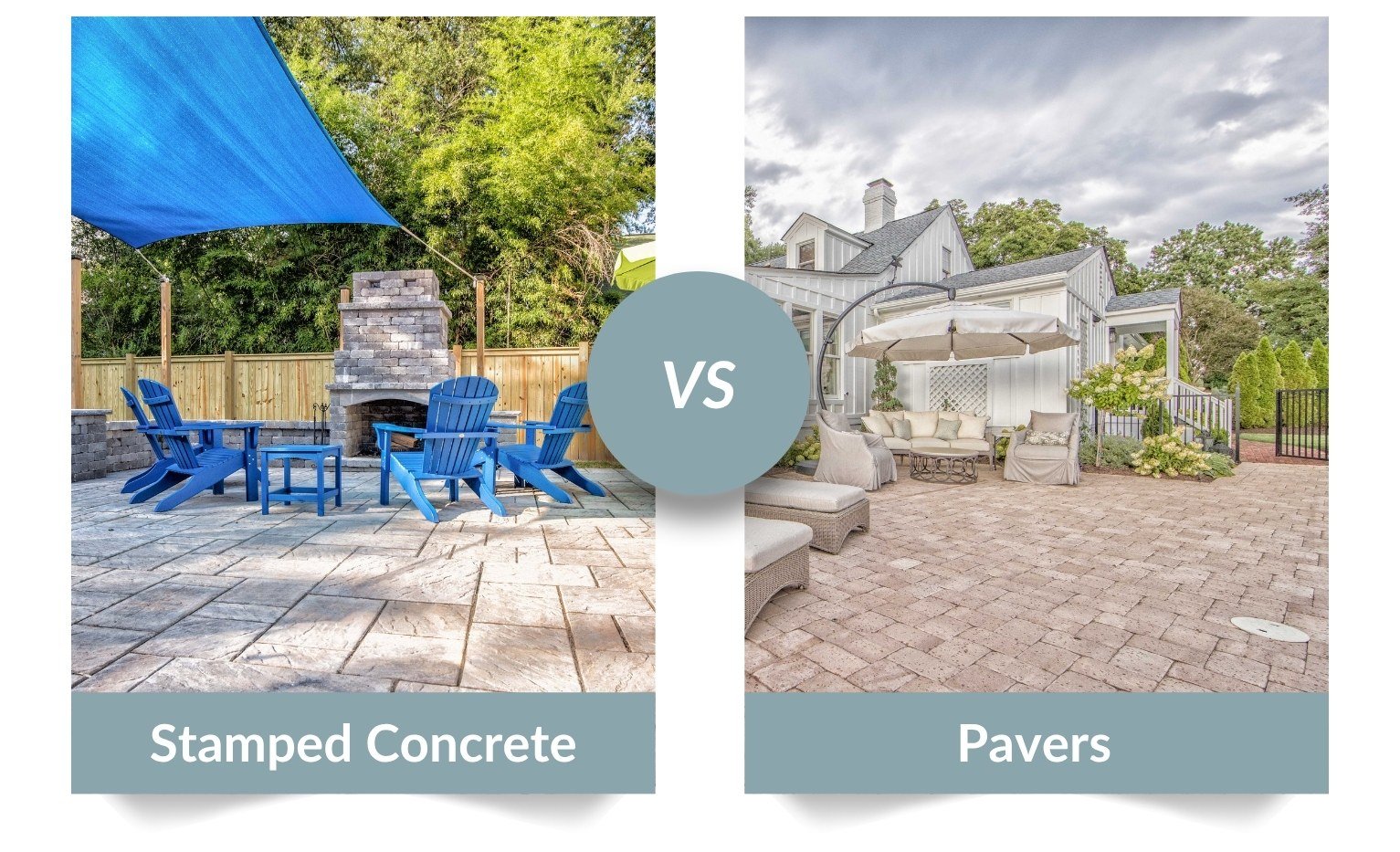How to Decide Between Stamped Concrete and Pavers for Your Outdoor Living Area
When you're planning an outdoor living space that feels as refined as it is functional, the surface underfoot matters just as much as what surrounds it. Stamped concrete and pavers are two of the most popular options, and for good reason. Each brings its own set of strengths in style, durability, and upkeep. If you're in Central Virginia and want a solution that matches your design taste, lifestyle, and long-term expectations, knowing how they compare is the first step to choosing confidently.
Related: Choosing the Best Stone Patio for Your Richmond, VA Home: Design & Durability Tips
Aesthetic Appeal: Crafting Your Outdoor Masterpiece
Stamped Concrete offers a seamless, monolithic surface that mimics the appearance of natural materials, such as flagstone or tile. The effect can be stunning when done well, with integral colors and surface textures that reflect light beautifully. However, its uniformity and the visible saw cuts needed to prevent cracking can subtly disrupt the illusion of authenticity.
Pavers, meanwhile, deliver depth and richness that’s hard to imitate. With each unit laid individually, you have creative control over color, texture, pattern, and finish. Whether you’re going for Old World charm or modern minimalism, pavers can be arranged to match and elevate your architectural style.
Cost Considerations: Balancing Budget and Quality
Stamped Concrete tends to have a lower initial cost because the installation involves fewer materials and less labor. However, long-term expenses, such as sealing, potential cracking, and complicated repairs, should be factored in.
Pavers have a higher upfront investment due to the detailed installation process, but they excel in long-term durability and ease of repair. The ability to replace single units without redoing entire sections gives pavers a practical advantage for homeowners who value excellence and efficiency.
Maintenance and Durability: Ensuring Longevity
In a climate like Virginia’s, with its occasional downpours, intense heat, and mild winters, durability is not a luxury but a necessity.
Stamped Concrete needs to be sealed regularly to maintain its finish and color. Even with proper sealing, it can still develop cracks due to soil shifting or thermal expansion. Repairs are challenging to blend seamlessly into the original surface.
Pavers, by contrast, resist cracking because of their segmented design. They're engineered to move with the earth rather than against it. Should a paver chip or stain, it can be swapped out cleanly with no patching or eyesores.
Climate Considerations: Adapting to Virginia’s Weather
Central Virginia’s humid subtropical climate delivers hot, sticky summers, mild winters, and the occasional blast of winter cold. Summers often bring intense sunlight and humidity, while winters can include frost, occasional snow, and freezing temperatures. The weather swings mean your outdoor materials need to be resilient against heat, moisture, and temperature shifts throughout the year.
Stamped concrete, while stylish, can be prone to cracking due to thermal expansion as temperatures fluctuate. Prolonged sun exposure can cause fading, dulling its appearance over time. Its smooth surface also becomes slippery when wet—a factor to weigh if you plan to install it near pools, patios, or outdoor dining areas.
Pavers, by contrast, thrive in Central Virginia’s climate. Their slightly textured surface improves traction in rainy weather, reducing slip hazards. Because pavers are laid individually with small gaps, they can flex and move somewhat with ground shifts or freeze-thaw cycles, preventing the cracks common with concrete slabs. Darker paver colors absorb sunlight, which helps thaw frost and ice more quickly during winter mornings, making your outdoor space safer and more accessible.
For homeowners in Central Virginia seeking a balance of durability and year-round elegance, pavers provide an innovative, practical, and beautiful solution that adapts to local climate challenges.
Installation Process: Understanding the Work Involved
Stamped Concrete requires a delicate balance of timing and technique. Pouring, stamping, and coloring must all occur in perfect sequence, and weather conditions must cooperate. Once poured, the surface needs to cure for several days.
Pavers involve excavation, base preparation, edge restraints, and careful placement. While more labor-intensive, this modular system ensures greater flexibility and control. Plus, once installed, pavers can be used immediately with no curing required.
What’s Your Design Vision? The Material Should Match It
When we sit down with clients, one of the first questions we ask is: What do you want to feel when you step outside? The answer often determines whether pavers or stamped concrete is the better fit.
Suppose you’re envisioning a grand courtyard that feels like it’s been there for generations, or a geometric modern patio with clean lines and subtle lighting. In that case, pavers can deliver with surgical precision. If you want a large, unified surface that mimics stone without the need for intricate detailing, stamped concrete may provide the scale and simplicity you’re after. Your landscape should tell your story. Choose the material that speaks your language.
Stamped Concrete vs. Pavers: Final Comparison at a Glance
Here’s a quick side-by-side look at how stamped concrete and pavers stack up in key areas like appearance, cost, and maintenance.
| Feature | Stamped Concrete | Concrete Pavers |
|---|---|---|
| Appearance | Mimics stone/tile | True stone/tile look |
| Installation Time | Several days + cure time | Immediate usability |
| Maintenance | Surface sealing & patching | Easy replacement |
| Crack Resistance | Moderate to poor | Excellent |
| Winter Durability | Prone to salt damage | Resistant to freeze-thaw |
| Snow Removal | Textured surface may hinder | Smooth & plow-friendly |
| Customization | Limited to stamp & color | Endless patterns & styles |

